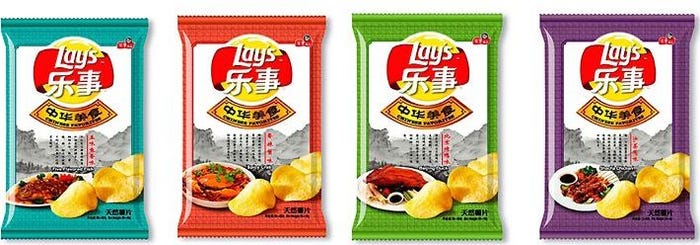Plenty of opportunities in the Chinese packaging market
When I've traveled to China to attend the Chinaplas show, something always sticks out to me: the market is hungry for new packaging. The country has seen a fast development in packaging market size, with projections that it will only continue to grow. In fact, a report by Smithers Pira claims that by 2020, the China's foodservice packaging market will be bigger than that of the U.S.This growth is due to a transition from its traditional shops to a more Western-style supermarkets and packaged foods.
September 12, 2014
When I've traveled to China to attend the Chinaplas show, something always sticks out to me: the market is hungry for new packaging. The country has seen a fast development in packaging market size, with projections that it will only continue to grow. In fact, a report by Smithers Pira claims that by 2020, the China's foodservice packaging market will be bigger than that of the U.S.
This growth is due to a transition from its traditional shops to a more Western-style supermarkets and packaged foods.
The Chinese food packaging market rose from almost $18 billion in 2007 to over $33 billion in 2012, according to Smithers Pira. Drinks packaging will rise at a CAGR of 8% until 2018, driven by increased consumption of plastic and canned beverages.
 For packaging suppliers, the market presents plenty of opportunity. Consumer packaged goods providers will capitalize on the trend of Westernization for new experiences and integrate more Western groceries onto their shelves, market research firm Canadean predicts.
For packaging suppliers, the market presents plenty of opportunity. Consumer packaged goods providers will capitalize on the trend of Westernization for new experiences and integrate more Western groceries onto their shelves, market research firm Canadean predicts.
Western brands of products such as fragrances, chocolates, coffee, cheese, ice cream, and carbonated soft drinks are becoming prevalent in Chinese retail markets.
What's interesting is that a typical Chinese supermarket in a developed urban area will actually have more variety in packaging as compared to an equivalent U.S. or Japanese store. Packaging suppliers have told me in the past that they feel innovative packaging applications is more accepted in that market.
Still, it's not a simple road. For instance, a food packaged product that works well in the U.S., may not translate to the Chinese market.
According to Catherine O'Connor, senior analyst at Canadean: "Despite China's growing interest in Western brands, foreign offerings do not always find it easy to integrate into the Chinese retail market. Earlier this year, Revlon and L'Oréal both pulled back from China, misunderstanding the needs of this lucrative market."
This deals more with the product itself, but it's something to keep in mind: Consumer Packaged Goods' (CPG) providers will attract more custom by localizing products to Chinese tastes, for example, KFC has introduced a ranged of breakfast soups, and Oreos are altered in China to have flavors such as green tea, as consumers found the originals too sweet.
But what comes with reformulating products for the Chinese market, is the need to modify packaging to influence them at the shelf edge. O'Connor explains: "In particular, the use of colors is of paramount importance for the Chinese. Yellow is seen as royal color and red is chosen for good luck and happiness. However, these bright colors are mostly preferred for food products, while pastel or white shades are preferred for household items and personal care products."
Another key item to keep in mind? Making sure you work with locals. Milliken representatives explained this to me at the Chinaplas 2014 show:
"One of the biggest questions is, how do you organize yourself to take advantage of the growing market?" Reed Walker, global marketing and business development manager for Milliken's plastics additives business. asked. "You need locals to help do it."
Wim Van de Velde, director of marketing for Milliken's plastic additives business, agreed.
"To do business in China, you have to invest in local people," he said. "This is why we have an R&D and sales service in Shanghai. While IP remains a concern, it is manageable."
Issues with IP is a subject the company knows well as last year during the Chinaplas show in Guangzhou, Milliken announced it had filed several lawsuits to protect the IP embodied in its Millad clarifying agents.
About the Author(s)
You May Also Like


